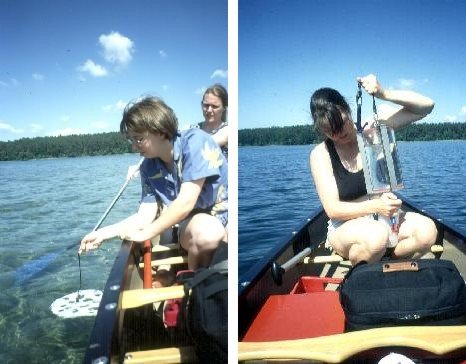Water quality assessment with hyperspectral HyMap and mulitspectral IRS 1C data
The monitoring of the trophic state of lakes and its changes is one of the main tasks in limnology. Several parameters serve as inputs for th e determination of the trophic state: Secchi depth is an indicator for the poten tial abundance of submerse macrophytes, chlorophyll concentration serves as indi cator for bioproduction, and humic substances indicate the amount of available c omponents of organic decomposition products. So far the inventory and monitoring of German inland waters has been conducted at the deepest points in a two to th ree year cycle. In lands like Brandenburg or Mecklenburg-Vorpommern with more th an 2,000 lakes larger than 1 ha each, the updating of the data base is time, cos t, and human power consuming. Remote sensing techniques offer the possibility to simplify the monitoring and to organize it more cost effectively. With remote s ensing entire lake districts can be recorded spatially and synoptically several times during one bioproductive season. The more intensive in situ measurements c ould then be utilized more effectively over space and time.
Hyperspectral data of the casi (Free University Berlin, Institute for Space Sciences) and HyMap scanners (Integrated Spectronics, data preparation: DLR) as well as multispectral data of the LISS-III sensor on board the Indian Remote Sensing Satellite have been evaluated for the determinat ion of the spatial distribution of trophic parameters. In situ reference data ha ve been analyzed at the Insitute for applied Freshwater Ecology (IaGB) and the Inst itute for Freshwater Ecology and Inland Fisheries (IGB) - Departments Limnology of Stratified Lakes and Chemical Labor atory.
Example Mecklenburg Lake District The glacially formed Mecklenburg lake district is located about 70 km northwest of Berlin, in half distance to the Baltic Sea. The test area is situated close to the Brandenburg city of Rheinsberg. The lakes within the test area differ considerably in their size, depth, and trophic state.
Hyperspectral Water Quality Assessment - Mecklenburg Lake District
Retrieval of chlorophyll content from multitemporal IRS-1C/LISS-III data
We would like to thank the Institute for Applied Fresh Water Ecology in Brandenburg (IaGB) for their cooperation during the field campaigns.


